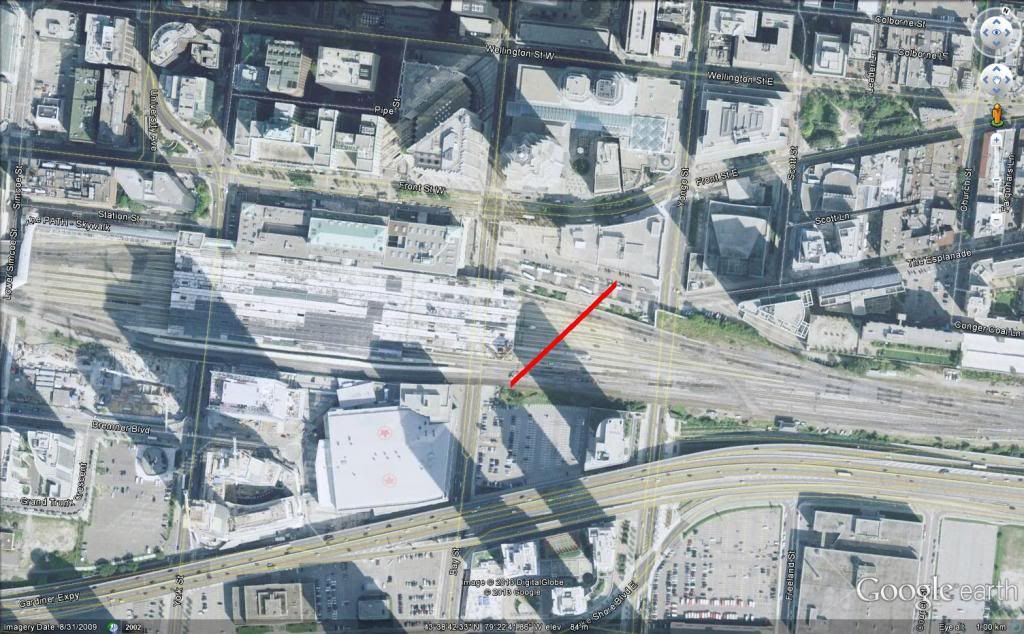Castle Frank is not a destination. It can never be a destination. It's surrounded by deep valleys, a huge cemetery, and some rich people mansions. Having it as terminus would be as hated as Kennedy.
Who said it would be a terminus? It would just be an interchange station. Interchange stations don't need to be a destination, they just have to be in a convenient location from a trip pattern perspective. The real terminus for the DRL would be at the Science Centre.
How are you getting down into the Don Valley? A gigantic viaduct that will make the abandoned CP Don Branch bridge look like a children's toy?
Going by Google Earth, you need to get down from an elevation of 376' to an elevation of 260'. How long a bridge is that going to be at a grade acceptable for subway trains (4 degrees)?
116 feet / sin(4) * sin(90) = 1662 feet or 506 metres
That's a lot of money that you are spending in order to not serve any riders at all.
The Millwood Road bridge is nearly the same length. Presumably a similar span would be required for a DRL crossing around that area. The engineering challenges would be about the same.
And I'd rather spend that than spend over a billion dollars tunnelling from Pape-Danforth to Millwood and only serving a relatively small number of riders.
And the Bloor-Danforth Subway crosses the Rosedale Valley as well. If it could be done in the 60s, why can't it be done now?
The following people will hate your plan:
- Regulars at the Evergreen Brickworks
- Drivers on Rosedale Valley Road
- Drivers on Bayview
- Cyclists on the Don Valley Trail
- Cyclists on the Park Drive Reservation Trail
- Cyclists on the Beltline Trail
The cyclists I can understand, but the drivers? Those roads would still remain open.
Parliament north of Cabbagetown is a historic district (or three). It can't be redeveloped. South of Cabbagetown, it's served perfectly well by a horizontal DRL.
Certain parts of it are, but there are a lot of parts that aren't, and have already started to see infill development. That wall of condos that is now firmly at Sherbourne is going to continue pushing east. Whatever isn't designated as a historic structure (and I'm sure even a couple that are) are going to follow the same pattern as similar properties between Sherbourne and Yonge.
1. Not a massive bridge. Don Valley is tiny between Gerard and Queen. The more south you are, the easier Don Valley is to cross.
I was talking about the required bridge in the Millwood area. No matter how you slice it, that's going to need to be a massive structure.
2. If you want more stops, put in more stops. Instead of Cosburn, do Mortimer and O'Connor. The station locations in the DRTES were for illustration purposes only, not binding.
I still don't think 2 stations that wouldn't be very heavily used between Thornecliffe Park and Bloor-Danforth is worth over a billion dollars in tunnelling.







